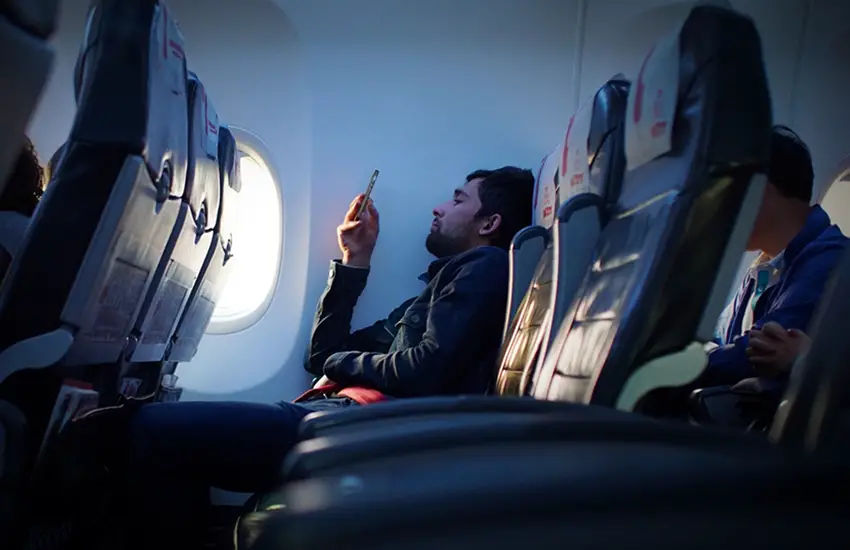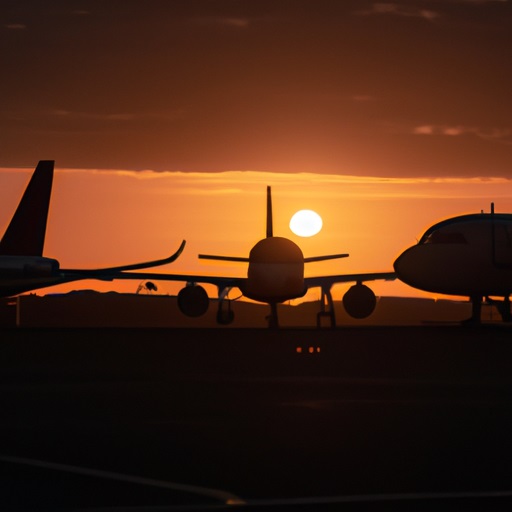
Airline Ancillary Revenue
Ancillary revenue refers to the additional sources of income that airlines generate from services and products that are not directly related to the sale of airline tickets. This type of revenue has become increasingly important in the airline industry as airlines look for new ways to increase their profits and offset the high costs associated with operating a flight.
Ancillary revenue can include a wide range of products and services, such as baggage fees, seat selection, in-flight food and drinks, loyalty programs, and more. The growth of ancillary revenue has changed the way airlines do business and has allowed them to offer more personalized and customized travel experiences to their customers.
What are the different types of airline ancillary revenue?
There are various types of ancillary revenue in the airline industry. Some of the most common include:
- Baggage fees: Airlines charge fees for checked and/or carry-on bags, which can generate significant revenue.
- Seat selection: Many airlines now charge extra fees for seat selection, including preferred seats with more legroom or seats with additional amenities.
- In-flight food and drinks: Airlines generate revenue from the sale of food and drinks on board their flights.
- Loyalty programs: Airlines often have loyalty programs that allow customers to earn rewards for their travel, such as free flights or upgrades. These programs can also generate revenue through the sale of miles or points to partners or affiliates.
- In-flight entertainment: Airlines can generate revenue from renting in-flight entertainment systems, such as personal screens with movies and TV shows.
- Wi-Fi: Some airlines charge fees for in-flight Wi-Fi, which allows passengers to stay connected during their flights.
- Priority boarding: Many airlines offer priority boarding for an additional fee, which allows passengers to board the plane before other passengers.
- Hotel and car rental partnerships: Airlines often partner with hotels and car rental companies to offer bundled travel packages, which can generate additional revenue.
- Travel insurance: Airlines can sell travel insurance to their customers, which provides protection in case of trip cancellations or other travel-related issues.
These are just a few examples of the types of ancillary revenue that airlines can generate. As the airline industry continues to evolve, new ancillary revenue sources will likely emerge, allowing airlines to offer their customers even more personalized and customized travel experiences.
Why is ancillary revenue significant for airlines?
As mentioned earlier, as airlines strive to increase their profits and mitigate the expenses involved in operating a flight, the importance of ancillary revenue has risen. There are several reasons why ancillary revenue is so significant:
- Increased profitability: Ancillary revenue allows airlines to increase their profitability by generating additional revenue from services and products that are not directly tied to the sale of airline tickets. For example, baggage fees, seat selection, and in-flight food and drinks can generate significant revenue for airlines.
- Cost reduction: Ancillary revenue can help airlines offset the high costs associated with operating a flight, such as fuel, maintenance, and labor costs.
- Personalized travel experiences: Ancillary revenue allows airlines to offer their customers more personalized and customized travel experiences. For example, seat selection and in-flight entertainment options can help passengers create a more comfortable and enjoyable travel experience.
- Competitive advantage: Ancillary revenue can also give airlines a competitive advantage over other airlines that may not offer these services or products. For example, an airline that offers in-flight Wi-Fi or priority boarding may be more appealing to customers looking for these amenities.
How has the growth of ancillary revenue changed the airline industry?
The growth of ancillary revenue has significantly impacted the airline industry and changed the way airlines do business. Here are a few ways in which the growth of ancillary revenue has changed the industry:
- Broader business model: The ancillary revenue growth has allowed airlines to shift their business model from solely focused on selling airline tickets to one that includes a wider range of services and products.
- Personalized travel experience: Ancillary revenue has allowed airlines to offer their customers more personalized and customized travel experiences.
- Pricing strategy: Additional ancillary revenue streams allow airlines to offer lower base fares, which can attract more price-sensitive customers. At the same time, they can still earn more money from customers who opt for added services and amenities. This flexible pricing strategy has become crucial to airlines’ overall revenue generation. It has allowed them to remain competitive in an industry that has faced numerous challenges in recent years.
- Increased competition: The ancillary revenue growth has also increased competition in the airline industry. Airlines are now competing with each other not just on ticket prices but also on the quality and range of services and products they offer to their customers.
What is the average ancillary revenue per passenger for airlines?
The average ancillary revenue per passenger for airlines can vary widely depending on several factors, such as the type of airline, the route, the type of passenger, and the mix of services and products offered.
According to data from IdeaWorksCompany, a leading consulting firm that tracks airline ancillary revenue, the average ancillary revenue per passenger for airlines globally was $29.96 in 2021. It’s an increase of 39% from $21.54 per passenger in 2019.
It’s worth noting that the average ancillary revenue per passenger can vary widely depending on the type of airline and the route. For example, low-cost carriers tend to have higher ancillary revenue per passenger than legacy carriers due to their unbundled pricing model and focus on offering low base fares with additional fees for services such as baggage and seat selection.
What is the difference between direct and indirect airline ancillary revenue?
In the airline industry, ancillary revenue can be broadly divided into two main categories: direct and indirect ancillary revenue.
Direct ancillary revenue is generated from services and products directly sold to passengers, such as baggage fees, seat selection, in-flight food and drinks, and travel insurance. Direct ancillary revenue is usually recorded at the time of sale and directly results from the passenger’s decision to purchase a specific service or product.
Indirect ancillary revenue refers to revenue generated from sources not directly sold to passengers, such as revenue from loyalty programs, partnerships with hotels and car rental companies, and the sale of miles or points to partners or affiliates. Indirect ancillary revenue is often generated through partnerships or other indirect means and is not recorded at the time of sale.
Strategies to grow airline ancillary revenue
Here are some strategies that airlines can use to grow their ancillary revenue:
Offer unique and innovative services and products
By thinking outside the box and offering innovative services and products, airlines can differentiate themselves from the competition and provide an enhanced travel experience for their customers. Here are some unique or new ideas that airlines can consider to increase their ancillary revenue:
- Virtual reality (VR) entertainment: Airlines can offer virtual reality headsets as an in-flight entertainment option, allowing travelers to experience immersive virtual worlds during their flight.
- In-flight wellness programs: Airlines can partner with health and wellness companies to offer online in-flight health and wellness classes, meditation apps, and weighted blankets to help travelers arrive at their destination feeling refreshed and rejuvenated.
- Eco-friendly initiatives: Airlines can offer customers the option to offset their carbon emissions by purchasing carbon credits or supporting sustainable initiatives.
- Personalized travel planning: Airlines can offer a concierge-style service to help travelers plan their trip, including booking accommodations, transportation, and activities.
- In-flight productivity tools and services: Airlines can provide in-flight productivity tools and services such as noise-canceling headphones, charging stations, or personal devices for an additional charge. It can help travelers make the most of their time in the air.
- Virtual tours: Airlines can partner with museums, galleries, and other cultural institutions to offer virtual tours of their exhibitions during the flight.
- In-flight language classes: Airlines can offer language classes taught by native speakers to help travelers improve their language skills while in transit.
Invest and enhance loyalty programs regularly
Airlines can also grow their ancillary revenue by regularly investing and enhancing their loyalty programs. By offering unique rewards and benefits to their frequent flyers, airlines can encourage customers to purchase additional services and products, such as flights, upgrades, and more.
Use data and analytics
Airlines can also use data and analytics to understand their customers better and optimize their ancillary revenue strategy. Use data and analytics to track customer behavior and preferences and develop personalized services and products.
How should airlines balance the need to generate ancillary revenue with passenger satisfaction?
Airlines should be transparent and communicate clearly with their customers about the ancillary products or services and any extra fees and charges associated with them. This can be done through the following:
- Clear and concise pricing: Provide clear and concise pricing information on the airline’s website, at the point of sale, and during the booking process so that customers are aware of the extra fees and charges associated with ancillary services.
- Package deals: Offer package deals that bundle several ancillary services at a discounted rate, making it easier and more affordable for customers to purchase these services.
- Customizable options: Provide customers with customizable options for ancillary services so that they can choose the services that are most relevant and valuable to them rather than feeling forced to pay for services they do not need.
- Upfront pricing: Provide upfront pricing for ancillary services so that customers are aware of the cost before they make a purchase. This can help to reduce the perception of hidden fees and charges and increase customer trust in the airline.
- Customer feedback: Regularly seek and incorporate customer feedback on the airline’s ancillary services and pricing so that the airline can make changes and improvements based on customer preferences.
By being transparent and offering customizable options, airlines can reduce customer frustration and increase customer satisfaction with their ancillary services.
What role do technology and data play in ancillary revenue for airlines?
Technology and data play a significant role in ancillary revenue for airlines. Here are some ways technology and data are used to drive ancillary revenue in the airline industry:
- Personalization: Airlines use data and technology to personalize the travel experience for their customers, offering relevant and targeted products and services based on their preferences and history.
- Dynamic pricing: Airlines use data and algorithms to dynamically adjust prices in real-time based on demand, capacity, and other factors, allowing them to maximize revenue from ancillary services and products.
- Predictive analytics: Airlines use predictive analytics to anticipate traveler behavior and demand for ancillary services and products, allowing them to make informed decisions about pricing and inventory management.
- Mobile platforms: Airlines use mobile platforms to offer customers a convenient and seamless way to book ancillary services and products through their smartphones or tablets, such as seat upgrades and in-flight meals.
- Customer insights: Airlines use data and technology to gather customer insights, such as travel patterns and preferences, to inform their ancillary revenue strategy and develop new products and services.
- Inventory management: Airlines use technology and data to manage the inventory of ancillary services and products, ensuring that they have the right products and services available to meet customer demand.
By leveraging technology and data, airlines can create more efficient and effective ancillary revenue strategies, improve the travel experience for their customers, and increase their overall revenue.
How do airlines use dynamic pricing for ancillary revenue?
Airlines use dynamic pricing to optimize their ancillary revenue by charging different prices for the same product or service based on supply and demand. This allows them to increase revenue and profitability by capturing the full value of their offerings. Dynamic pricing is often used in the following ancillary revenue areas:
- Seat selection: Airlines can charge different prices for the same seat based on its location, such as an aisle or window seat, or its proximity to the front of the cabin.
- Baggage fees: Airlines can use dynamic pricing to charge more for baggage during peak travel times or for larger bags.
- In-flight services: Airlines can charge different prices for in-flight meals, entertainment, and other services based on demand and market conditions.
- Upgrades: Airlines can use dynamic pricing to offer upgrades to premium cabins or seats for a higher fee.
By using dynamic pricing, airlines can better align their pricing with the current market conditions and customer demand, which allows them to maximize their ancillary revenue and increase overall profitability.
How has the rise of low-cost carriers impacted ancillary revenue in the airline industry?
The rise of low-cost carriers has led to the development and increase in new ancillary revenue streams in the airline industry. Low-cost carriers have disrupted the traditional airline business model by offering low base fares and allowing passengers to pay for additional services, such as baggage, seat selection, and in-flight meals.
This approach has encouraged airlines to think creatively about new revenue streams and has led to the development of unique and innovative ancillary products and services, as mentioned earlier.
The low-cost carrier model has also influenced the pricing strategies of full-service carriers, who have started to adopt the unbundling of services and the charging for additional services as a way to remain competitive in an increasingly crowded market.
Read More about Airline Ancillary Revenue
Already one of the largest revenue categories for airlines, ancillary products are well positioned for continued growth. Booking Holdings, the world’s leading ...
The art of digital retail includes a variety of strategies for ancillary sales. Airline eCommerce tactics require relevance, differentiation and seamless user ...
Ancillary revenue refers to the additional sources of income that airlines generate from services and products that are not directly related to the sale of ...
Airline ancillary revenue is on track to reach $109.5 billion this year worldwide, up almost fivefold from 2010. Yet evidence is mounting that a large segment ...
Ancillary revenue management is an important part of an airline's business model. Here are the four categories of categories of airline ancillary revenue. ...
With the availability of customer data and the evolution of analytical technologies and models, we believe that experience-based ancillary can add ...
Ancillary revenue refers to revenue that companies earn from sales of products or services that do not represent part of their main activity. Airlines provide ...
The airline industry operates on razor-thin profit margins. In fact, globally most years airlines lose money. This makes finding new revenue streams outside of ...
This paper examines the performance of the two core classifications of airline ancillary revenues, which are unbundled products and commission based income. It ...
Still using spray-and-pray marketing tactics to push ancillary sales? There's an easier (and drastically more effective) way. Source: How to Increase ...
IGT Solutions will help you to Unleashing the True Potential of Airline Ancillary Service with EMD that stands for Electronic Miscellaneous Document. ...
Buying an entire row or the seat next to you would, previously, have been a fairly niche purchase and often difficult to automate. But that's changed in a ...
Ancillary revenues are rising, and airlines increasingly depend on them. The next step forward: Efforts to help frontline employees collect these fees and ...











